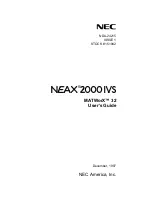
Appendix A
DeviceNet Overview
A-8
ni.com
The
DeviceNet Specification
defines four types of master/slave
I/O connections: polled, bit strobed, change-of-state (COS), and cyclic.
A slave device can support at most one polled, one strobed, and one COS
or cyclic connection (COS and cyclic connections cannot be used
simultaneously).
Polled I/O
The polled I/O connection uses a request/response scheme for each device.
The master sends a poll command (request) message to the slave device
with any amount of output data. The slave then sends a poll response
message back to the master with any amount of input data. The poll
command/response messages are handled individually for each slave which
supports polled I/O connections. Polled I/O is typically used for devices
which provide both input and output data, such as position controllers and
modular I/O devices.
Figure A-3 shows an example of four polled slave devices.
Figure A-3.
Polled I/O Example
Bit Strobed I/O
The (bit) strobed I/O connection is designed to move small amounts of
input data from the slave to its master. Strobed I/O is typically used for
simple sensors, such as photoelectric sensors and limit switches.
Strobed I/O is also called bit strobed I/O since the master sends a 64-bit
(8-byte) message containing a single bit of output data for each strobed
Master
MAC ID = 1
Slave
MAC ID = 9
Slave
MAC ID = 11
Slave
MAC ID = 12
Slave
MAC ID = 13
12 Byte Poll Command
5 Byte Poll
Response
2 Byte Poll
Command
20 Byte Poll
Command
3 Byte Poll
Response
6 Byte Poll Response
15 Byte Poll Response
5 Byte Poll Command
Output data
Input data
















































